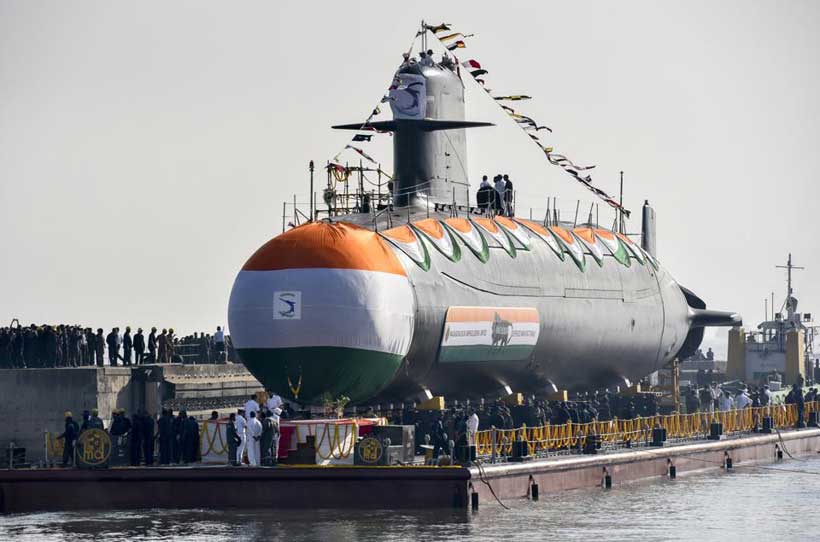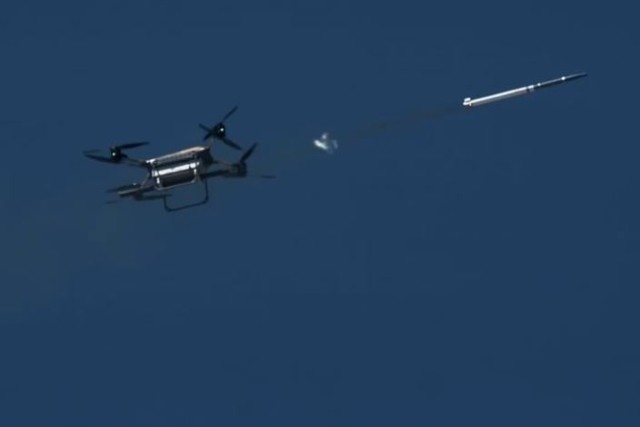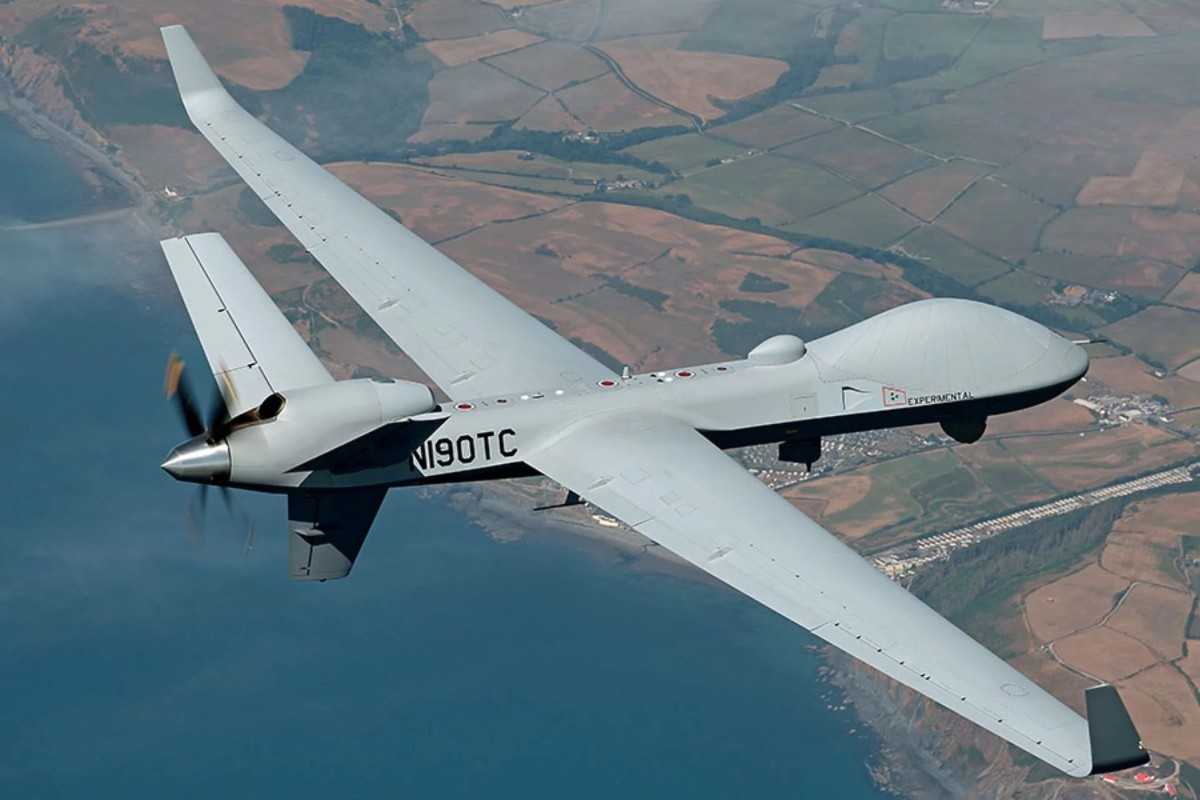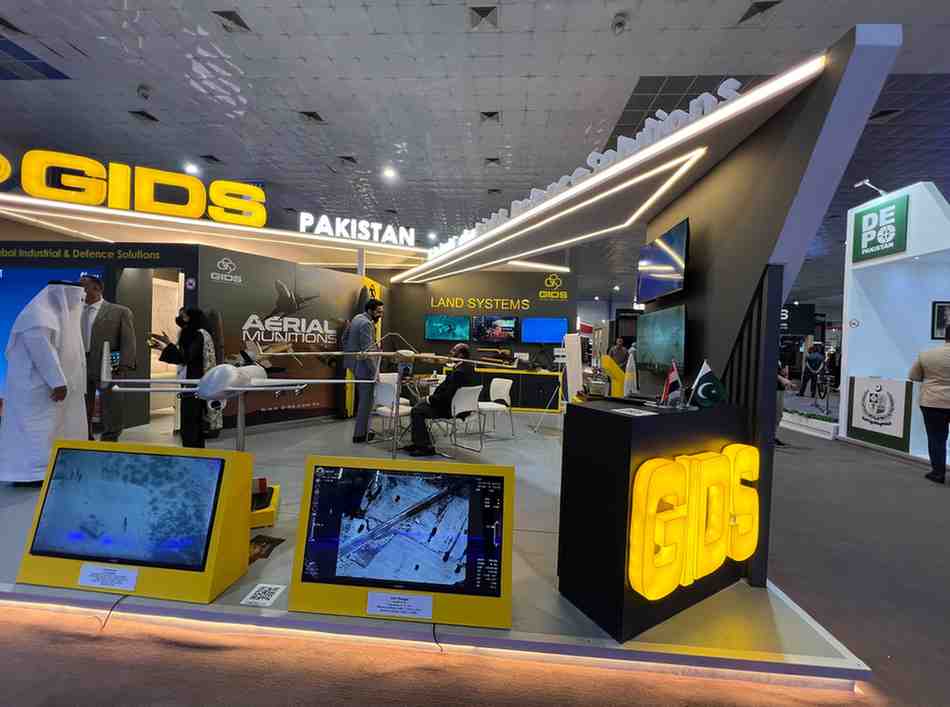Abstract
The Indian Ocean has always remained a key sea line of communication both at regional and as well as global. The Republic of India, as one of the main stakeholders in the Indian Ocean Region, has always realized the strategic importance of the Indian Ocean Region since its inception and has always been ambitious to establish its dominance in the region. In the quest for regional power status India has undertaken innumerable steps in the naval domain. In recent times, India has been focusing and spending a large sum of capital on its naval modernization in pursuance of developing blue-water capabilities and expanding its prowess in the region and beyond. The Indian Navy is enhancing its expansion in the Indian Ocean region with a permanent deployment of over a dozen surface and sub-surface ships, including on vital sea routes, choke points, and straits. This paper aims to explore the Indian naval modernization and expansion in the Indian Ocean region over the period and its implications on national security of Pakistan.
Introduction
The Indian Ocean region touches almost three of the seven continents, Asia at North, Africa at its West, and Australia in its East. The Indian Ocean has always remained a key sea line of communication both at regional and as well as global. The region covers about 68.556m km2 and is home to many marginal and regional seas and many strategically important choke points, including, the Arabian Sea, Bay of Bengal, Gulf of Aden and Oman, Persian gulf, Great Australian Bight, Mozambique channel, Strait of Malacca, etc.[1]
The economic development of many coastal states in the peripheries of the Indian Ocean is highly dependent on the sea line of communications. In contemporary times the coastal states of the region are included in the race for growing economies. Gulf States export their petroleum exports via the Indian Ocean (80% of world petroleum export) making it a pivotal global trade route[2]. In addition, this region is also a big market for fishing and has an enormous amount of natural resources.
The Republic of India, as one of the main stakeholders in the Indian Ocean Region, has always realized the strategic importance of the Indian Ocean Region since its inception and has always been ambitious to establish its dominance in the region. India’s strategic community mindset views the region as the manifestation of India’s strategic presence in the Indian Ocean region[3]. Today, the Indian navy is the world’s 6th largest navy in the world[4]. In the quest for regional power status India has undertaken innumerable steps in the naval domain. In recent times, India has been focusing and spending a large sum of capital on its naval modernization in pursuance of developing blue-water capabilities and expanding its prowess in the region and beyond.
Today, modernization in naval capabilities has enabled India to expand its muscles all over the region and made India one of the key pre-eminent maritime actors in the Indian Ocean. In addition, the convergence of Indo-US interests’ vis-à-vis China has also played a key role in India’s naval advancement and becoming a principal maritime power in the Indian Ocean[5].
This India- US nexus for the containment of china has raised serious security challenges not only for china but also for the other regional principle actors too, specifically, Pakistan. India’s naval modernization and its expansion in the region have already been perceived by Pakistan as a national security challenge. The Indo-US growing romance would further exacerbate the security threat for Pakistan as both states had remained an arch rivals since independence from British Raj.
This paper aims to explain and analyze India’s naval modernization and expansion in the Indian Ocean Region and also try to address its repercussions on Pakistan’s national security.
Theoretical Framework
Offensive realism is a theoretical offshoot of the dominant theory of classical realism in International Relations. It encapsulates the fundamental principles of the classical realist approach when emphasizing the key role of states as rational actors that interacts in the anarchic international political jungle by relying on the principles of self-help and survival.
The theory of offensive realism was coined in 2001 by John J. Mearsheimer in his book, The Tragedy of Great Power Politics. Mearsheimer considers it, “a powerful tool in a dark room, even though it can’t illuminate every nook and cranny but most of the time it’s an excellent tool for navigating through the darkness”[6].
Offensive realism accepts the notion of international anarchy which has prevailed in the past, and present, and will continue to do so, due to the non-availability of central authority or central supreme power to dictate the rational entities. All the actors evaluate the external environment through rational and cost-benefit calculations. In this anarchic structure, the idea of fear always has prevailed because states never understand each other intentions. Moreover, Mearsheimer also argues that global hegemony is not possible because of the “stopping power of water” that halts the incapacity of countries to project their military muscles across the globe[7]. The optimal framework or plan for a power would be becoming a hegemon at the regional level, having implicit control in the region. Thus becoming a regional hegemon is the ultimate objective of states.
- Mearsheimer’s Theory of Offensive Realism lay down a comprehensive theoretical structure for understanding the Indian naval modernization and expansion in the Indian Ocean. Today the Indian naval advancement is the visible manifestation of this notion.
India’s Modernization of Naval Assets
Over the period, India is modernizing its naval capabilities, both, indigenously and by collaborating with its strategic partners. India has always been one of the biggest exporters of Russian naval armaments[8]. With its new strategic ties with the western world, India is also getting naval technological favors from the US and its allies[9] (France and Israel etc.) while acting as a watchdog of the western world in the region of Asia generally and Indian Ocean Region specifically (Chinese containment strategy).
According to budget estimation for the fiscal year 2022-23, the Indian Navy has been provided with an amount of 450 million INR for the modernization of its assets[10]. In addition, it’s also being anticipated that by 2026-27 the navy will receive about 2.7 hundred million for only its modernization purposes, showing an annual 10% growth for naval modernization[11].
In contemporary times, the Indian navy has two in-service aircraft carriers which include; INS Vikramaditya and INS Vikrant. INS Vikrant was commissioned into Indian naval services on the 2nd of Sept, 2022[12]. Its India’s first indigenously built carrier. This indigenized production of a sophisticated aircraft carrier shows the comprehensive modernization venture of the Indian Navy. The flight decks of the carrier can house 30 MIG-29K fighter jets, and kamov-31 Russian-made early warning helicopters. Moreover, US-made MH-60R Helicopters were also delivered to the Indian navy and are now on board INS Vikrant.
In addition, India is also investing a huge amount to induct a third carrier, INS Vishal into its naval assets[13]. An emphasis is being made on the integration of multiple technologies such as the Electromagnetic Air-lift system which was distributed to India by USA-based defense company, General Atomics Electromagnetic Systems Group (GA-EMS). It’s anticipated to enter into service by 2030.
The Indian navy currently has 10 guided missile destroyers in 4 classes, which include: Vishakhapatnam, Delhi, Kolkata, and Rajput[14].
Visakhapatnam class (Project 15-B) destroyers are purely indigenously developing destroyers, equipped with advanced weapons and sensors with a sophisticated surveillance radar system. INS Visakhapatnam the lead destroyer commissioned on 21 November 2021 while the remaining three Murmogoa, Imphal, and Porbandar are in various stages of development[15].
In addition, Project 18 is another class of indigenous destroyers that India is working on to replace its old Rajput Class destroyers[16]. This would be equipped with state-of-the-art systems like laser-based close-in weapon systems, electromagnetic rail guns, and advanced AESA&PESA radars.
Indian Navy has 14 frigates in service which are divided into Shivalik, Talwar, Brahmaputra, and Godavari classes respectively[17]. The ongoing Project-17A (Nilgiri class frigate) is follow on of the Project-17 Shivalik class frigate. The frigates are being used with the most advanced naval technologies and would be armed with BrahMos and Barak-8ER indo-Israeli made surface to air missiles system. INS Nilgiri and Himgiri are currently under construction and would join the Indian naval fleet by 2025[18]. Moreover, the Indian navy is also working with Russians under Project 11356 to acquire modern Talwar class frigates able to be effectively used not only against surface ships but also against submarines.
India is currently having 26 corvettes which are divided into Kamorta, Kora, khukri, Abhay, and Veer classes[19] respectively. In the domain of corvettes, India’s Defence Acquisition Council approved 4.6 billion dollars for the procurement of 8 new-generation corvettes which would be highly advanced and versatile in their roles[20].
India is also expanding a large sum of capital to modernize its submarine capabilities. India has a total of 16 submarines in service, out of which 15 are conventional diesel-powered submarines and one ballistic missile nuclear submarine [21](INS Arihant). INS Chakra, which was commissioned into Indian naval services back in 2012, was returned to Russia in 2021, upon the expiry of the lease duration[22]. Back in June 2021, the Indian Defence Ministry permitted the construction of 6 conventional submarines under project 75(1) indigenously. In addition, under project 75 (Alpha) India is also ambitious to build 6 SSNs (nuclear attack submarines). After INS Arihant India is also looking for INS Arighat[23], which would be India’s second indigenous ballistic missiles nuclear submarine (SSBN). According to some reports, it would enter into services in the early months of 2023. Furthermore, India also has signed an agreement with Russia for the acquisition of the Chakra-3 Akula class submarine[24]. It’s also nuclear-powered with extraordinary stealth potential and can remain submerged for a longer time. It’s expected to join the Indian naval fleet by 2025.
In addition to these, the Indian navy has also commissioned eight P-8I, US-made long-range maritime reconnaissance, and anti-submarine warfare aircraft worth US$21 Bn[25]. It is highly advanced and is equipped with the latest technological weapons such as Harpoon block- II missiles, and MK-54 light-weight torpedoes. Furthermore, it can detect an incoming threat away from the strategic assets.
Above all, India is also investing in space technologies that will modernize the surveillance and reconnaissance abilities of its military forces. To enhance maritime surveillance and reconnaissance abilities over the Indian Ocean region, India launched the GSAT-7 (Rukmini) satellite[26]. The GSAT-7 would enable the Indian navy to have a long range of footprints over the Indian Ocean region (3500-4000km) and enables real-time networking of assets on the sea as well as on land.
India’s expansion in Indian Ocean Region
There is a consensus exists among India’s strategic thinkers, that the Indian Ocean has its identical nomenclature (India-an) which gives sole authority to India over the Indian Ocean region (considering it as the ocean of India). The ocean has been viewed as backyard of India where it has a legitimate right over the wide sea line of communications in the region.
India’s approach toward the Indian Ocean region is particularly shaped by a contemporary strategic environment in the region with the rise of the people’s republic of China[27].The Indian Navy is enhancing its expansion in the Indian Ocean region with a permanent deployment of over a dozen surface and sub-surface ships, including on vital sea routes, choke points, and straits.
At the Shangri La Dialogue, the Indian PM Modi embraced the concept and elaborated the indo-pacific construct as stretching “from the shores of Africa to that of Americas”[28]. SAGAR (Security and Growth for All in the region) is the manifestation of India’s contemporary maritime policy. The SAGAR initiative focuses on the cooperation of India with other smaller littoral states by means of acquiring naval bases and free access to their territorial waters[29]. India has chosen the littoral states in such a strategic manner that it will bring the Indian Ocean region under the Indian sphere of influence and also help to bring the region of the Indian Ocean under its naval surveillance in its entirety.
India has also set up a naval facility in the north Agalega islands, Mauritius[30]. As per multiple media sources, India has invested an estimated amount of 250 million dollars in the Agalega islands for the buildup of an airfield, naval port, and communication center. This setup would act as a surveillance outpost for the Indian navy, especially in the southwestern part of the Indian Ocean region (Mozambique Channel). In addition, India also signed a bilateral agreement with the government of Seychelles back in 2015, for keeping a close eye on the Mozambique Channel. Though the agreement faced a setback as a result of contempt of the masses back in 2015, a few months ago Indian navy (INS Sunayna) participated in Combine Maritime Forces (CMF) exercises in Seychelles along with the US and other western allies[31].
Back in 2017, India and Singapore signed a bilateral agreement[32]. As per the understanding of the agreement government of Singapore authorized the Indian navy to use the Changi naval base for logistical support as well as refueling of naval ships.
India’s, Andaman and Nicobar islands territory being in close vicinity to the Strait of Malacca, holds very key importance for India in the Indian Ocean region. INS Baaz, the Indian naval air station, which is located in Campbell Bay of Andaman Island, is the most forward base of the Indian navy which is very close to the Strait of Malacca[33].
In addition, India has entered into several mutual understandings with the USA and multiple Western powers regarding the Indian Ocean region. Indo-US maritime cooperation is based on the assumptions chalked out in the ‘Joint Strategic Vision for the Asia Pacific and Indian Ocean Region’. In 2018, US-India signed the COMCASA (Communication Compatibility and Security Agreement) which enabled India to procure state-of-the-art US-made military arms[34]. Moreover, this security agreement also enabled the Indian navy to have wide access to the USA’s secure data links for its maritime domain awareness.
On October 27, 2020, USA and India signed Basic Exchange and Cooperation Agreement (BECA)[35]. The essence of the understanding is to share not only military arsenals but also sharing of real-time intelligence and information. I2U2 (India, Israel, UAE, and USA) grouping, has been recognized as the “West Asian Quad”, by the UAE ambassador to India[36].
The QUAD agreement has brought the navies of regional and international navies together to counter the Chinese threat in the indo-pacific region. Within the framework of QUAD, Japan and India have mutually aimed to collaborate on IPDMA (Indo-Pacific Maritime Domain Awareness)[37]. Moreover, a few years back both India and Japan also signed ASCS (Acquisition and Cross-Servicing) agreement. Within this framework, both navies have participated in Malabar exercises with other partners in the region. At the end of the Malabar 2022 naval exercises, the Indian navy spokesperson said that “Malabar 22 provides an important opportunity for the Indian navy to enhance its interoperability and mutual understanding with other participants following the national vision of security and growth for all in the region[38].
India has also invested a great amount of capital in building of Chabahar seaport in Iran. According to some media reports, this port is the main part of India’s maritime strategy to balance Chinese growing influence in the north-western region of the Indian Ocean.
Above all, India is also a founding member of the Indian Ocean Rim Association. The IORA which was formed for economic cooperation has now extended its realm to include maritime safety and security and non-traditional threats. Many regional and extra-regional states are party to it. India being its pioneer member halted Pakistan’s membership in the IORA[39].
Implications for Pakistan
Pakistan is one the principal stakeholder in the Indian Ocean region, naval modernization of the Indian navy coupled with its expansion in the Indian Ocean region would have grave concerns for the national security of Pakistan. Pakistan is of the strong view that the Indian Ocean is not only India’s ocean but the common heritage of all the littoral states in the region. India’s rapid naval advancement and extending its naval muscles across the Indian Ocean would not only have implications for the national security of Pakistan but also disturb the equilibrium of strategic stability in the region.
Pakistan is very skeptical of India’s strategic partnership with the USA and new its alliances with the regional states in the region, keeping Pakistan aside. Indian navy is trying to establish naval bases across the Indian Ocean region and has made many arrangements with other states (Japan, Australia, Mauritius, Madagascar, Seychelles etc.) in the region. Pakistan which is economically struggling could not modernize its naval assets finds this advancement of India in the region as offensive and disturbing the balance in the region.
Moreover, Pakistan being a nuclear state has to assure its deterrence capability vis-à-vis its next-door nuclear rival, India. Though Pakistan has completed its nuclear triad (Babur-3) but still lacks nuclear power submarine for assured second-strike capability[40]. India has already a nuclear power submarine in its inventory and also investing a huge amount to further strengthen its nuclear capabilities. This is something that always pinches Pakistan’s strategic thinkers because to balance India, Pakistan has to invest in its military assets which would ultimately result in a pointless arms race in the region. Pakistan, which is already going through a worst economic crisis, has been forced to invest in military capabilities while keeping the other sectors of national security at a secondary level.
In addition, India always halted Pakistan’s membership in the IORA. IORA is one of the key associations of the powers in the region that formulates policy regarding non-traditional threats and maritime security. Since Pakistan is a non-member of the association so it’s unable to articulate and express its concerns with other party states. This further weakens Pakistan on the strategic front in the Indian Ocean region instead of being a key actor in the region.
India is also investing in the building up of Chabahar port in Iran. This poses a serious threat to the national security of Pakistan. India could use this port against Pakistan in times of crisis and also previous actions of Indian naval officers (e.g. Kulbushan Jadhav) to destabilize Pakistan via using Chabahar port are also present.
Conclusion
As an ambitious regional hegemon and security provider of the region, India is investing huge capital in its military modernization and naval expansion. In the domain of the Indian Ocean region, India is not only investing heavily but also taking on board other powers by making strong partnerships and alliances. Pakistan always has a defensive posture and always wishes to have a smooth and conducive environment in the Indian Ocean region for trade and commerce. The Indian ambition of pushing Pakistan to the corner would not only result in the inflammation of rivalry but also destabilize the region of South Asia as a whole.
[1] Malik, Ahmad Rashid. “The Indian Ocean Security: Challenges and Opportunities for Pakistan.” Journal of Security and Strategic Analyses 3, no. 1 (2017): 25-44.
[2] Priyanjoli Ghosh, “India’s Indian Ocean Region Strategy,” journal of Indo-Pacific Affairs, Air University Press, August 2020.
[3] Harsh V. Pant, “India in the Indian Ocean: Growing Mismatch Between Ambitions and Capabilities,” Pacific Affairs 82, no. 2 (2009): 279-297.
[4] Thakker, Aman. “A rising India in the Indian Ocean needs a strong Navy.” Center for Strategic and International Studies.
[5] Sai Ul Haq, “Indian Naval Modernization and its Implications for Pakistan,” IPRI Journal 21, no. 02 (2021)
[6] John J. Mearsheimer, The Tragedy of Great Power Politics (New York: W. W. Norton & Company, 2014),
[7] ibid
[8] Saeed, Maira Afzazze, and Umbreen Javaid. “INDIA’S NAVAL EXPANSION AND STRATEGIC PARTNERSHIP WITH THE US IN THE INDIAN OCEAN REGION: IMPLICATIONS FOR PAKISTAN.” Margalla Papers 24, no. 1 (2020): 67-80.
[9] Ibid, 67.
[10] India Budget | Ministry of Finance | Government of India 2022-23, accessed December 11, 2022, https://www.indiabudget.gov.in/doc/bh1.pdf.
[11] Baruah, Darshana M. India in the Indo-Pacific: New Delhiʹs Theater of Opportunity. Carnegie Endowment for International Peace., 2020.
[12] Rajagopalan, Rajeswari Pillai. “India Commissions Latest Aircraft Carrier.” (2022).
[13] Sana, Asma, and Shaheen Akhtar. “India’s ‘Indo-Pacific’Strategy: Emerging Sino-Indian Maritime Competition.” Strategic Studies 40, no. 3 (2020): 1-21.
[14] Joshi, Yogesh. “Nehru’s Navy: India’s Tryst with Aircraft Carriers.” (2022).
[15] Naval News Staff, “Second Project 15B Destroyer Delivered to the Indian Navy,” Naval News, last modified November 25, 2022, https://www.navalnews.com/naval-news/2022/11/second-project-15b-destroyer-delivered-to-the-indian-navy/.
[16] Ibid.
[17] “Shivalik Class, Talwar Class, Kamorta Class | Indian Navy,” accessed December 13, 2022, https://www.indiannavy.nic.in/content/shivalik-class-talwar-class-kamorta-class.
[18] Ibid, 82.
[19] Ibid.
[20] Fatima Bahtić, “India Gives Go-ahead for Purchase of 8 Next-gen Corvettes Under $9.8BN Military Program,” Naval Today, last modified June 6, 2022, https://www.navaltoday.com/2022/06/06/india-gives-go-ahead-for-purchase-of-8-next-gen-corvettes-under-9-8bn-military-program/.
[21] Ghazala Yasmin Jalil, “India’s Development of Sea-based Nuclear Capabilities: Implications for Pakistan,” Strategic Studies 38, no. 1 (2018): 34-47, doi:10.53532/ss.038.01.00160.
[22] “Navy’s Only Nuclear Attack Submarine Returns To Russia Before Lease Expires,” NDTV.com, last modified June 4, 2021, https://www.ndtv.com/india-news/navys-only-nuclear-attack-submarine-ins-chakra-returns-to-russia-before-lease-expires-2456368.
[23] “Deterrence Messaging Behind INS Arihant’s N-missile Launch,” Hindustan Times, last modified October 16, 2022, https://www.hindustantimes.com/india-news/deterrence-messaging-behind-ins-arihant-s-n-missile-launch-101665897355361.html.
[24] ibid
[25] Swarajya Staff, “India Deploys P-8I Aircraft At France’s Reunion Island For Third Time In Three Years As China Increases Presence In Western Indian Ocean,” Swarajyamag, last modified November 9, 2022, https://swarajyamag.com/defence/india-deploys-p-8i-aircraft-at-frances-reunion-island-for-third-time-in-three-years-as-china-increases-presence-in-western-indian-ocean.
[26] Lauren J. Borja and M.V. Ramana, “Command and Control of India’s Nuclear Arsenal,” Journal for Peace and Nuclear Disarmament 3, no. 1 (2020): 1-20.
[27] Ibid
[28] Cossa, Ralph A., and Brad Glosserman. “THE PIVOT IS DEAD, LONG LIVE THE (INDO-ASIA-PACIFIC) PIVOT.” Comparative Connections: A Triannual E-Journal on East Asian Bilateral Relations 20, no. 2 (2018).
[29] Raagini Sharma, “India’s Maritime Diplomacy (SAGAR Policy as the focal point),” Research Institute for European and American Studies, February 2022.
[30] Shashank Tyagi, “India’s Military Base in Mauritius – Free PDF Download,” StudyIQ, last modified May 23, 2022, https://www.studyiq.com/articles/indias-military-base-mauritius-free-pdf/.
[31] “INS Sunayna in Seychelles to Mark India’s Maiden Participation in CMF Exercise,” The Economic Times, last modified September 26, 2022,
[32] Virain Mohan, “Reenergizing Indian Security in the Indian Ocean Region,” Journal of Indo-Pacific Affairs, July/August 2022, accessed December 14, 2022.
[33] ibid
[34] Aman Thakker, “U.S.-India Maritime Security Cooperation,” Center for Strategic and International Studies |, accessed December 16, 2022, https://www.csis.org/analysis/us-india-maritime-security-cooperation.
[35] White, Joshua T. “After the foundational agreements: An agenda for US-India defense and security cooperation.” Brookings Institution (2021).
[36] ibid
[37] Jash, Amrita. “The QUAD factor in the Indo-Pacific and the role of India.” Journal of Indo-Pacific Affairs 4, no. 02 (2021): 78-85.
[38] “Japan Hosts Australia, India, U.S. in Naval Exercise Malabar 2022,” United States Navy, accessed December 16, 2022, https://www.navy.mil/Press-Office/News-Stories/Article/3216935/japan-hosts-australia-india-us-in-naval-exercise-malabar-2022/.
[39] Harsh V. Pant, India and Global Governance: A Rising Power and Its Discontents (Routledge Chapman & Hall, 2022).
[40] Mustafa, Malik Qasim. “Pakistan‟ s Second Strike Capability: A Step towards Deterrence Stability in South Asia.” Issue brief of Institute of Strategic Studies, Islamabad (2017).
Bibliography
Bahtić, Fatima. “India Gives Go-ahead for Purchase of 8 Next-gen Corvettes Under $9.8BN Military Program.” Naval Today. Last modified June 6, 2022. https://www.navaltoday.com/2022/06/06/india-gives-go-ahead-for-purchase-of-8-next-gen-corvettes-under-9-8bn-military-program/.
Borja, Lauren J., and M.V. Ramana. “Command and Control of India’s Nuclear Arsenal.” Journal for Peace and Nuclear Disarmament 3, no. 1 (2020), 1-20. doi:10.1080/25751654.2020.1760021.
“Deterrence Messaging Behind INS Arihant’s N-missile Launch.” Hindustan Times. Last modified October 16, 2022. https://www.hindustantimes.com/india-news/deterrence-messaging-behind-ins-arihant-s-n-missile-launch-101665897355361.html.
Ghazala Yasmin Jalil. “India’s Development of Sea-based Nuclear Capabilities: Implications for Pakistan.” Strategic Studies 38, no. 1 (2018), 34-47. doi:10.53532/ss.038.01.00160.
Ghosh, Priyanjoli. “India’s Indian Ocean Region Strategy.” journal of Indo-Pacific Affairs, Air University Press, August 2020. https://www.airuniversity.af.edu/JIPA/Display/Article/2331112/indias-indian-ocean-region-strategy/.
India Budget | Ministry of Finance | Government of India 2022-23. Accessed December 11, 2022. https://www.indiabudget.gov.in/doc/bh1.pdf.
“INS Sunayna in Seychelles to Mark India’s Maiden Participation in CMF Exercise.” The Economic Times. Last modified September 26, 2022. https://economictimes.indiatimes.com/news/defence/ins-sunayna-in-seychelles-to-mark-indias-maiden-participation-in-cmf-exercise/articleshow/94451138.cms.
“Japan Hosts Australia, India, U.S. in Naval Exercise Malabar 2022.” United States Navy. Accessed December 16, 2022. https://www.navy.mil/Press-Office/News-Stories/Article/3216935/japan-hosts-australia-india-us-in-naval-exercise-malabar-2022/.
Mohan, Virain. “Reenergizing Indian Security in the Indian Ocean Region.” Journal of Indo-Pacific Affairs, July/August 2022. Accessed December 14, 2022. https://media.defense.gov/2022/Jul/31/2003046328/-1/-1/1/04%20MAHON_FEATURE.PDF.
Naval News Staff. “Second Project 15B Destroyer Delivered to the Indian Navy.” Naval News. Last modified November 25, 2022. https://www.navalnews.com/naval-news/2022/11/second-project-15b-destroyer-delivered-to-the-indian-navy/.
“Navy’s Only Nuclear Attack Submarine Returns To Russia Before Lease Expires.” NDTV.com. Last modified June 4, 2021. https://www.ndtv.com/india-news/navys-only-nuclear-attack-submarine-ins-chakra-returns-to-russia-before-lease-expires-2456368.
Pant, Harsh V. India and Global Governance: A Rising Power and Its Discontents. Routledge Chapman & Hall, 2022.
Pant, Harsh V. “India in the Indian Ocean: Growing Mismatch Between Ambitions and Capabilities.” Pacific Affairs 82, no. 2 (2009), 279-297. doi:10.5509/2009822279.
Sharma, Raagini. “India’s Maritime Diplomacy (SAGAR Policy as the focal point).” Research Institute for European and American Studies, February 2022. https://www.rieas.gr/images/asia/maritimesec2.pdf.
“Shivalik Class, Talwar Class, Kamorta Class | Indian Navy.” Accessed December 13, 2022. https://www.indiannavy.nic.in/content/shivalik-class-talwar-class-kamorta-class.
Staff, Swarajya. “India Deploys P-8I Aircraft At France’s Reunion Island For Third Time In Three Years As China Increases Presence In Western Indian Ocean.” Swarajyamag. Last modified November 9, 2022. https://swarajyamag.com/defence/india-deploys-p-8i-aircraft-at-frances-reunion-island-for-third-time-in-three-years-as-china-increases-presence-in-western-indian-ocean.
Thakker, Aman. “U.S.-India Maritime Security Cooperation.” Center for Strategic and International Studies |. Accessed December 16, 2022. https://www.csis.org/analysis/us-india-maritime-security-cooperation.
Tyagi, Shashank. “India’s Military Base in Mauritius – Free PDF Download.” StudyIQ. Last modified May 23, 2022. https://www.studyiq.com/articles/indias-military-base-mauritius-free-pdf/.
Ul Haq, Sai. “Indian Naval Modernization and its Implications for Pakistan.” IPRI Journal 21, no. 02 (2021).
Author: Afaq Ahmad is a student of Strategic Studies at the National Defence University Islamabad. He can be reached at aafaq054@gmail.com.
- Global Defense Insighthttps://defensetalks.com/author/umair/
- Global Defense Insighthttps://defensetalks.com/author/umair/
- Global Defense Insighthttps://defensetalks.com/author/umair/
- Global Defense Insighthttps://defensetalks.com/author/umair/













